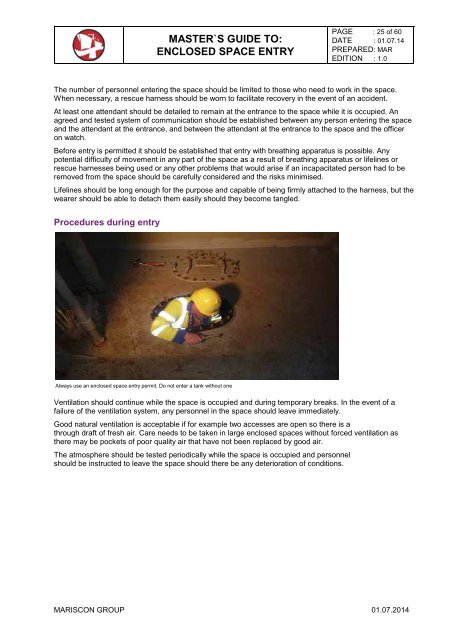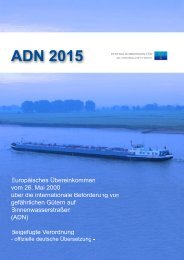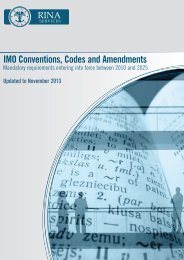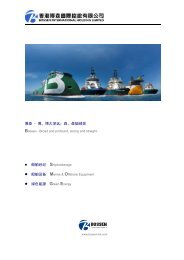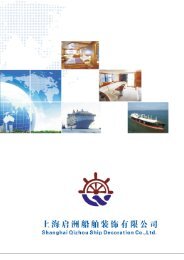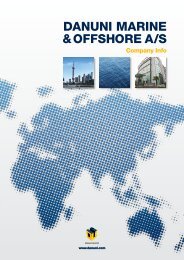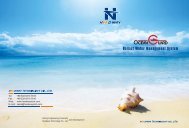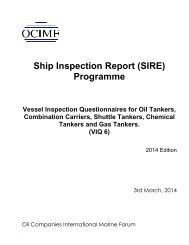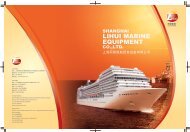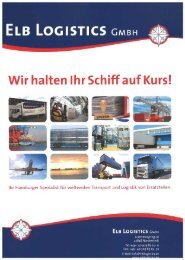MASTER`S GUIDE TO: ENCLOSED SPACE ENTRY
Create successful ePaper yourself
Turn your PDF publications into a flip-book with our unique Google optimized e-Paper software.
<strong>MASTER`S</strong> <strong>GUIDE</strong> <strong>TO</strong>:<br />
<strong>ENCLOSED</strong> <strong>SPACE</strong> <strong>ENTRY</strong><br />
PAGE : 25 of 60<br />
DATE : 01.07.14<br />
PREPARED: MAR<br />
EDITION : 1.0<br />
The number of personnel entering the space should be limited to those who need to work in the space.<br />
When necessary, a rescue harness should be worn to facilitate recovery in the event of an accident.<br />
At least one attendant should be detailed to remain at the entrance to the space while it is occupied. An<br />
agreed and tested system of communication should be established between any person entering the space<br />
and the attendant at the entrance, and between the attendant at the entrance to the space and the officer<br />
on watch.<br />
Before entry is permitted it should be established that entry with breathing apparatus is possible. Any<br />
potential difficulty of movement in any part of the space as a result of breathing apparatus or lifelines or<br />
rescue harnesses being used or any other problems that would arise if an incapacitated person had to be<br />
removed from the space should be carefully considered and the risks minimised.<br />
Lifelines should be long enough for the purpose and capable of being firmly attached to the harness, but the<br />
wearer should be able to detach them easily should they become tangled.<br />
Procedures during entry<br />
Always use an enclosed space entry permit. Do not enter a tank without one<br />
Ventilation should continue while the space is occupied and during temporary breaks. In the event of a<br />
failure of the ventilation system, any personnel in the space should leave immediately.<br />
Good natural ventilation is acceptable if for example two accesses are open so there is a<br />
through draft of fresh air. Care needs to be taken in large enclosed spaces without forced ventilation as<br />
there may be pockets of poor quality air that have not been replaced by good air.<br />
The atmosphere should be tested periodically while the space is occupied and personnel<br />
should be instructed to leave the space should there be any deterioration of conditions.<br />
MARISCON GROUP 01.07.2014


